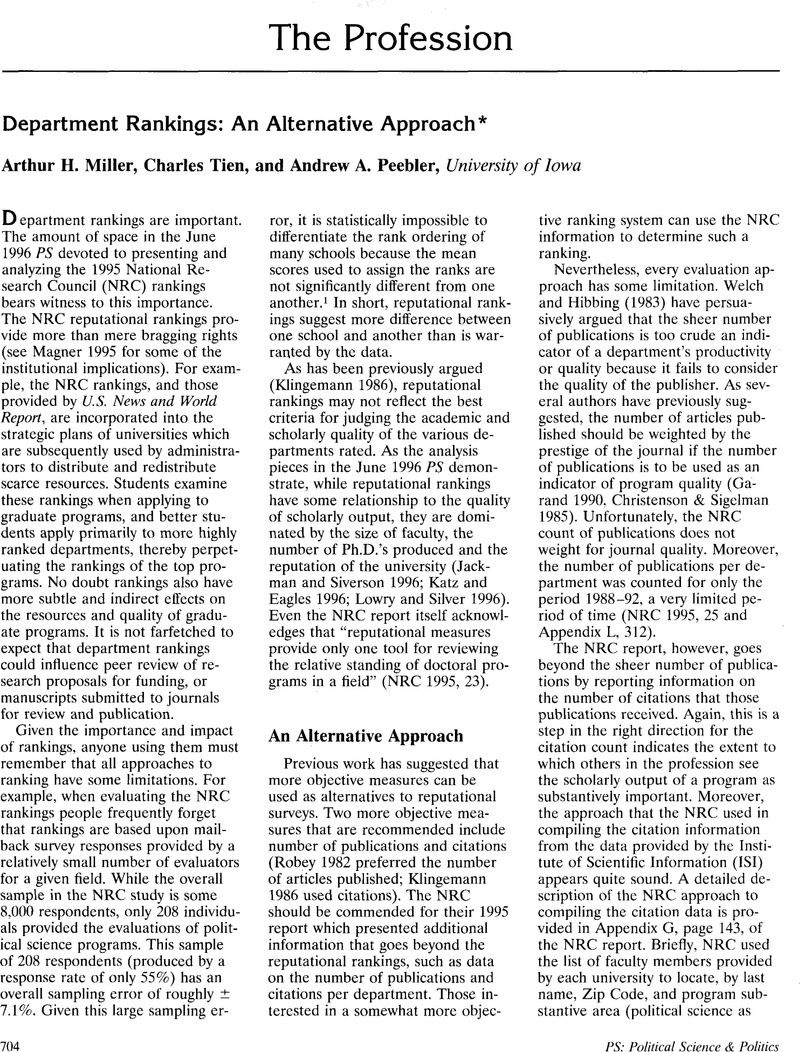Crossref Citations
This article has been cited by the following publications. This list is generated based on data provided by
Crossref.
Dolan, Julie
Kropf, Martha E.
O'Connor, Karen
and
Ezra, Marni
1997.
The Future of Our Discipline: The Status of Doctoral Students in Political Science.
PS: Political Science & Politics,
Vol. 30,
Issue. 4,
p.
751.
Ballard, Michael J.
and
Mitchell, Neil J.
1998.
The Good, the Better, and the Best in Political Science.
PS: Political Science & Politics,
Vol. 31,
Issue. 4,
p.
826.
Fisher, Bonnie S.
Cobane, Craig T.
Vander Ven, Thomas M.
and
Cullen, Francis T.
1998.
How Many Authors Does It Take to Publish an Article? Trends and Patterns in Political Science.
PS: Political Science & Politics,
Vol. 31,
Issue. 4,
p.
847.
Garand, James C.
and
Graddy, Kristy L.
1999.
Ranking Political Science Departments: Do Publications Matter?.
PS: Political Science & Politics,
Vol. 32,
Issue. 1,
p.
113.
Goodson, Larry P.
Dillman, Bradford
and
Hira, Anil
1999.
Ranking the Presses: Political Scientists' Evaluations of Publisher Quality.
PS: Political Science & Politics,
Vol. 32,
Issue. 2,
p.
257.
Altman, David
2006.
From Fukuoka to Santiago: Institutionalization of
Political Science in Latin America.
PS: Political Science & Politics,
Vol. 39,
Issue. 1,
p.
196.
Fowler, James H.
Grofman, Bernard
and
Masuoka, Natalie
2007.
Social Networks in Political Science: Hiring and
Placement of Ph.D.s, 1960–2002.
PS: Political Science & Politics,
Vol. 40,
Issue. 4,
p.
729.
Masuoka, Natalie
Grofman, Bernard
and
Feld, Scott L.
2007.
Ranking Departments: A Comparison of Alternative
Approaches.
PS: Political Science & Politics,
Vol. 40,
Issue. 3,
p.
531.
Masuoka, Natalie
Grofman, Bernard
and
Feld, Scott L.
2007.
The Political Science 400: A 20-Year Update.
PS: Political Science & Politics,
Vol. 40,
Issue. 1,
p.
133.
Montpetit, Éric
Blais, André
and
Foucault, Martial
2008.
What Does it Take for a Canadian Political Scientist to be Cited?*.
Social Science Quarterly,
Vol. 89,
Issue. 3,
p.
802.
Mulligan, Robert F.
2024.
Publication trends in political economy scholarship 2011–2020.
Constitutional Political Economy,
Vol. 35,
Issue. 2,
p.
200.
